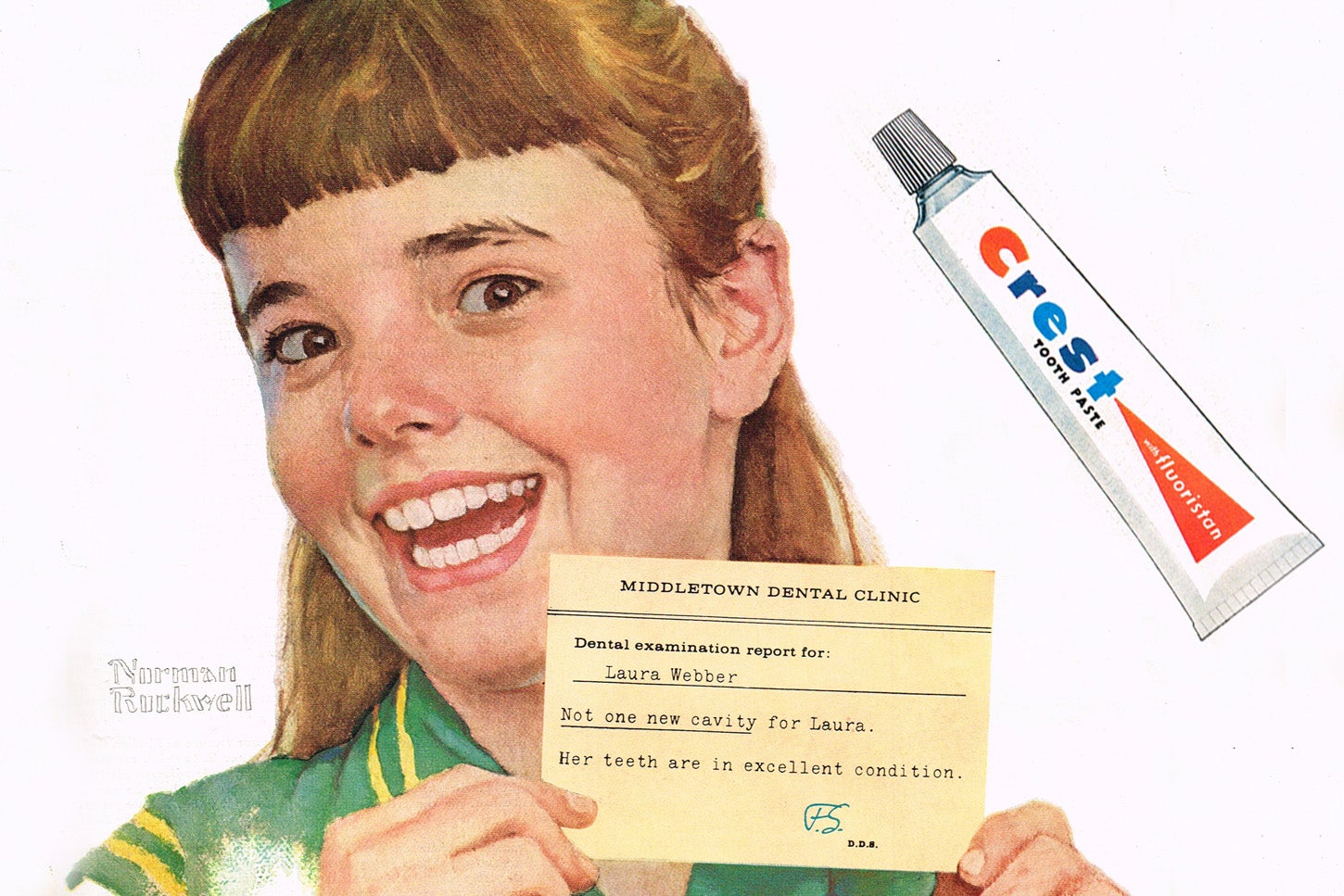Over the second half of the nineteenth century, Miskell writes, dental disease rose dramatically. Cheaper, sugar-filled packaged foods encouraged tooth decay. Meanwhile, the rise of white flour meant that people were eating softer food, which stimulates less of the salivation that can deter plaque buildup.
Would you brush with a toothpaste for the sweet taste alone or because of its touted health benefits? The answer wasn’t always so obvious.

For most of us, toothpaste is among the most basic household staples due to its obvious importance for our dental health. As business historian Peter Miskell writes, it wasn’t always that way. In fact, brands started promoting the benefits of toothpaste well before they actually existed.
By the turn of the twentieth century, dental professionals were aware of these issues. Dentists advised brushing teeth to remove food particles and stimulate salivation. However, there was no proven chemical treatment, so it didn’t matter what was on the brush. The best health benefit toothpaste makers could offer was that the taste of their product encouraged brushing by making it more pleasant.
Still, Colgate Dental Cream, the leading brand at the time, marketed the product in terms of the health benefits of brushing. In 1911 and 1912, Colgate sent two million free trial tubes of its product to schools, gave out brushes, and hired hygienists to show students how to brush.
As the advertising industry grew in the 1920s, particularly with the emergence of commercial radio, toothpaste was one of the most advertised products. Most advertisers did not focus on supposed health benefits. Instead, they tried to differentiate their brands by pointing to “the social advantages of whiter teeth and fresher breath,” Miskell writes.
The marketing surge worked. In 1938, a “cupboard inventory” of households in U.S. cities found that 65 percent had toothpaste.
But toothpaste brands still saw real health benefits as their holy grail. In the early 1950s, Procter & Gamble spent more than $3 million working with University of Indiana researchers to develop a real therapeutic toothpaste containing fluoride.
In 1956, P&G launched the resulting product: Crest. Advertising posters, designed by Norman Rockwell, used the slogan “Look, mom, no cavities.” But Crest was not an immediate hit. It barely dented Colgate’s dominant market share and lagged behind P&G’s own Gleem brand, which sold itself on a cosmetic rather than a therapeutic basis.
*Original article online at https://daily.jstor.org/how-toothpaste-got-scientific-cred/
